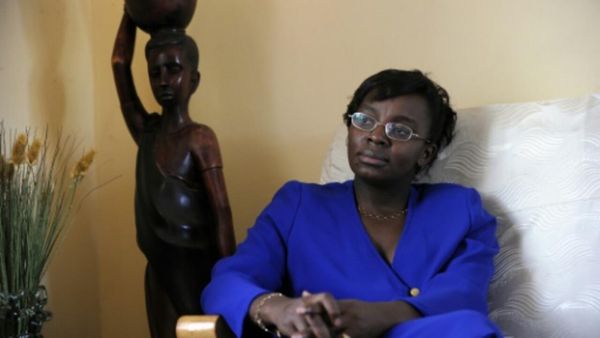
NAHA -- A massive fire destroyed the main part of Shuri Castle in Naha on Oct. 31, after a 30-year restoration project had been completed in January.
The Seiden main hall and other destroyed buildings all sit atop the castle's ruins, which are part of a UNESCO World Heritage site, and were reconstructed after the original structures burned down during the Battle of Okinawa at the end of World War II.
This symbol of Okinawa Prefecture is close to the heart of Okinawans, and served as a hub for promoting the history of the Ryukyu Kingdom and the prefecture's culture.

A mix of cultures
Shuri Castle was the political, diplomatic and cultural center of the Ryukyu Kingdom, which lasted for about 450 years until 1879. However, attacks by U.S. forces during the Battle of Okinawa in 1945 caused almost all of the buildings to burn down -- including the most important, Seiden, which was designated as a national treasure before the war.
Okinawa Prefecture returned to Japanese sovereignty in 1972, and the reconstruction project for Shuri Castle began in 1989. It was based on prewar historical materials, but many of the buildings had only their exterior restored.
Situated on a hill, Shuri Castle covers 4.7 hectares in an ellipse stretching about 400 meters from east to west and about 200 meters from north to south. The walls encircling the castle, which are 4 meters thick and up to 10 meters tall, are made of Ryukyu limestone.
The buildings' structure incorporated a blend of architectural styles from Japan and China -- both of which the kingdom maintained tributary relations with -- to establish a distinctive style that reflected the history of Okinawa.
The restoration of the entire castle, including the Ouchibara private area for the king and his kin, was completed this year, and it was opened to the public in February.
When Yomiuri Shimbun staff visited the castle in August, visitors were first greeted by Shureimon, a Chinese-style gate where the heir of the Ryukyu king used to welcome envoys from China. The road from the gate led to the Hoshinmon gate, beyond which was the Una central area, paved with rows of vermilion tiles. This square once hosted tributary ceremonies in which the Chinese emperor recognized the king of Ryukyu.
The castle's main buildings surrounded Una. At the front was Seiden, a three-story structure that was the largest wooden building in the kingdom and the venue for the king's ceremonies. At left was Hokuden north hall, a one-story structure used to entertain Chinese envoys and for kingdom officials to conduct administrative work, and at right was Nanden south hall and Bandokoro, partly two-story buildings used to entertain envoys from the Satsuma domain -- which roughly corresponds to today's Kagoshima Prefecture -- and to hold annual events.
The Seiden adopted three architectural styles: Japanese, Chinese and Ryukyu. The Japanese style for temple construction could be seen in Seiden's decorative gable roof with its arched curved lines called karahafu. The Chinese style was found in the structure built on stylobates, while the Ryukyu style could be seen in the columns on both sides of the front stairs that featured dragon designs.
On Seiden's first floor the king attended to government affairs and rituals with his vassals, while on the second floor, the king performed rituals with court ladies. The third floor was an attic for ventilation.
Impressively placed on both the first and second floors were thrones that had been restored based on a portrait of one king. On the first floor, visitors were able to see the remains of Seiden, which date back to the 17th century and earlier, through transparent floorboards.
The sitting room and bedroom for the king were located in the Kugani-Udun building, and on the east side bordered by Seiden was Ouchibara, where no men were allowed to enter except for the king's kin. Further east was Yohokoriden, where the enthronement ceremony was held for the heir upon the death of his predecessor. At the easternmost point was an observatory overlooking Naha city, from which visitors could see that the castellated walls were curved, unlike the typical stone walls of castles on the mainland.
Shuri Castle is believed to have originally been built in the 14th century. It is said that during the Sanzan period -- when Ryukyu was divided into the northern, central and southern parts of Okinawa Island, the kingdom of Chuzan in the central part built a castle where Shuri Castle stands today, and Chuzan King Sho Hashi further developed it after uniting the island.
In 1609, during the early years of the Edo period (1603-1867), the Ryukyu Kingdom was invaded by the Satsuma domain, which made the kingdom its tributary. From that point, Shuri Castle served as the site for receiving envoys from China and Satsuma.
In 1853, during the final days of the shogunate, U.S. Commodore Matthew Perry visited the castle. The Meiji government established the Ryukyu domain in 1872, and sent troops to overthrow the kingdom and establish Okinawa Prefecture in 1879. The king was forced to surrender Shuri Castle.
In 1925, the Seiden was designated as a national treasure but later underwent major repairs due to its aging. However, all was destroyed during the Battle of Okinawa in 1945, except for the castellated walls and foundations.
Chosen as summit venue
A movement to restore Shuri Castle began while Okinawa Prefecture was under U.S. military rule after World War II. Shureimon gate was restored in 1958, and restoration work for Seiden and other structures started in 1989, after the prefecture had been returned to Japanese sovereignty in 1972. The premises were opened to public as Shurijo Castle Park in 1992.
Shuri Castle was chosen as the venue for the 2000 summit meeting of the Group of Eight major nations in Okinawa Prefecture. A banquet was held at the Hokuden, based on historical records of Perry dined there when he visited the Ryukyus.
To commemorate the summit, a 2,000 yen bill was issued that bears a picture of Shureimon, which escaped damage in the latest fire.
In the same year, the remains of five castles were added to the UNESCO World Cultural Heritage list as "Gusuku Sites and Related Properties of the Kingdom of Ryukyu" (gusuku means castle in the Okinawan language). The five include Nakijin Castle and Nakagusuku Castle, in addition to Shuri Castle.
Read more from The Japan News at https://japannews.yomiuri.co.jp/







